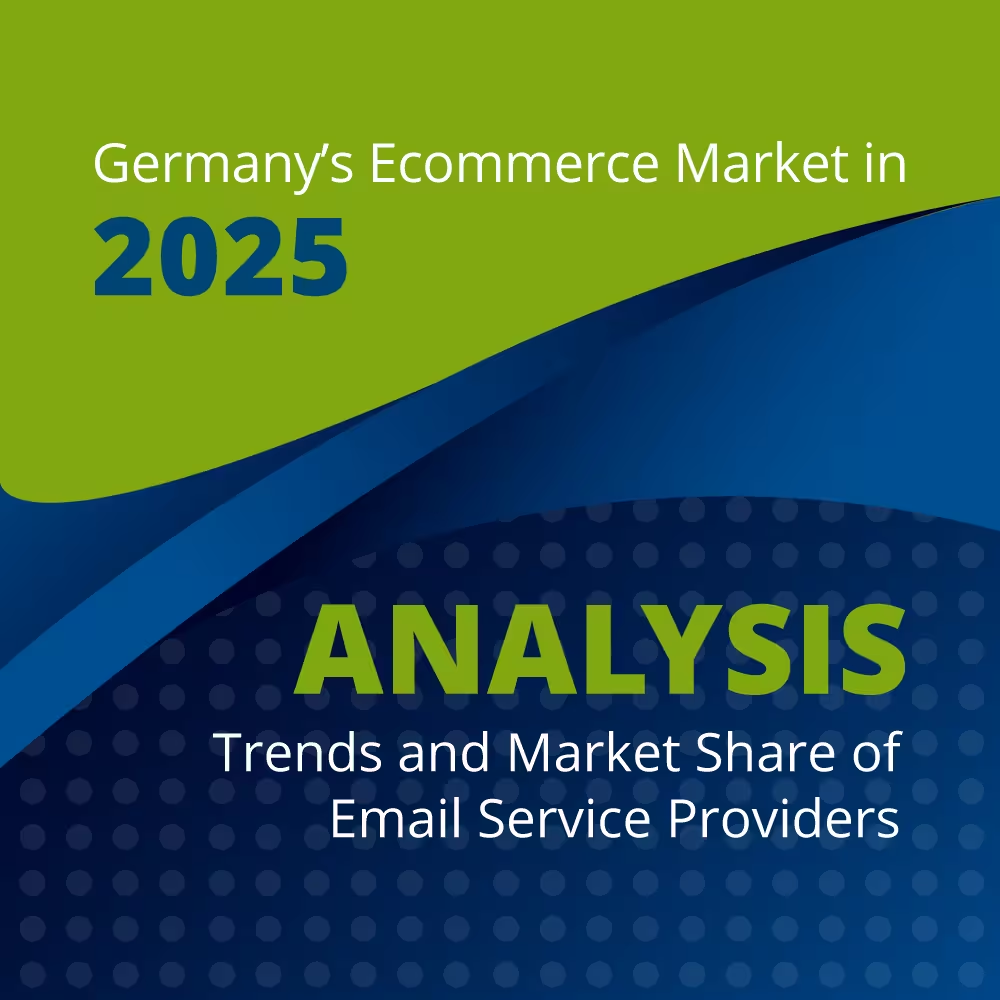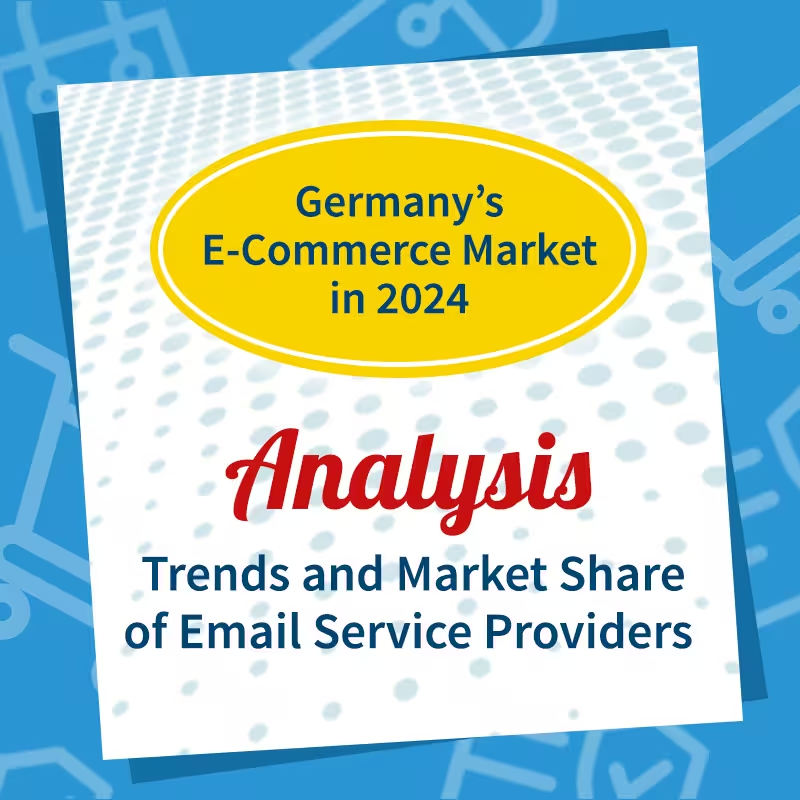The email marketing of Germany's 1,000 top-selling online shops in 2020
Email and e-commerce belong together — nothing has changed in 2020: The vast majority of the 1,000 top-selling online shops in Germany rely on email as an effective marketing tool.
As part of the “E-Commerce Market Germany 2020" study by EHI Retail Institute and Statista, we have recorded how many online shops actively engage in email marketing and what they use to send their emails. As in 2018 and 2019, we have subscribed to newsletters in all shops, provided that no purchase was required to register.

Here you can find the latest analysis results for Email marketing of the top 1000 e-commerce companies in Germany 2025
Emails: Who is sending what?
The popularity of marketing emails has hardly changed compared to previous years: 93.4 %* of the shops surveyed offer an email subscription (2019:95%), of which 93% also sent at least one marketing email during the investigation period. We received a total of 17,217 emails from these 872 online shops within three months. The delivery volume and frequency are as varied as the online shops themselves: Every tenth shop sent us only one email per quarter, 2% of e-commerce operators sent us an e-mail daily (when subscribing to all newsletters offered by a shop) **. This range shows how flexibly the email marketing tool can be adapted to the different business requirements of various companies.
87% of online shops send emails — what about the rest? Read our article about online shops that do not use email marketing.
Trend towards ESPs but no consolidation
We identified the email delivery systems used based on unique characteristics. If no email service provider (ESP) could be identified, these are usually in-house developments or API-based shipping services. The trend continues towards external email delivery service providers: 788 shops (90%) ** used an ESP to send their emails, compared to 83% and 82% in the previous two years. Only 35 e-commerce operators (4%) used a script/shop module to send marketing emails and only 30 (3.4%) use an email API sending service. Only 2% of shops were unable to determine which shipping system was being used, which is also due to our refined recognition methods. Accordingly, we identified more ESPs used in 2020 (at the 788 shops mentioned, in 2019 at 765 shops). This shows the same diversity as before, there can be no question of market consolidation: A total of 67 different ESPs were used, in 2019 there were 66 platforms, 2018:64.
Only a second look reveals the changes
The “consistent diversity” of ESPs shown does not mean that there is no movement in the market. The six most-used platforms are the same as last year: Emarsys, Episerver, Salesforce Marketing Cloud, CleverReach, Inxmail and Mailchimp. But a lot has happened in terms of shares:
- Although Emarsys can record an absolute increase of two shops, the share remains constant at just under 23% due to the higher overall recognition rate (see above) ***. On closer inspection, however, there is also movement here: 11 shops switched from Emarsys to another provider, but the platform is gaining 13 new customers.
- Salesforce Marketing Cloud continues the trend of the previous two years and displaces Episerver from second position. This year, 83 of the 1,000 largest online shops in Germany used Salesforce Marketing Cloud to send emails, in 2019 there were only 63, in 2018 only 41 — Salesforce's market share in this population has thus doubled from 5.3% (2018) to 10.5% in two years.
- CleverReach and Inxmail swap places 4 and 5, but are very close together.
- The biggest losses were recorded by Episerver (-1.2 percentage points; 77 instead of 84 shops), Mailingwork (- 1%, 2 instead of 10 shops) and Mapp (-0.9%, 22 instead of 28 shops), which continues the previous year's trend and slips from position 7 to position 9 of the most-used email marketing platforms in the study (see E-Commerce Study 2019).
- SAP has been investing massively in the development of the SAP Marketing Cloud for several years and has gained 3 stores compared to the previous year. Nevertheless, only 0.6% of the top 1,000 online shops use SAP Marketing Cloud so far. With the recently announced purchase of Emarsys, SAP is able to significantly increase its market share.
It is also interesting that many of the “smaller” solution providers continue to assert themselves on the market. 83% of online shops use one of the 15 most-used platforms to send their marketing emails (see chart) — which means, conversely, that 17% of companies rely on one of the 52 (!) Trust other ESPs; the “others” would therefore be in second place among the most used providers taken together. The distribution is reminiscent of the “long tail”: At the bottom of the market share list, there are 29 platforms that are only used by one or two of the top-selling German online shops, which corresponds to a market share in the low alcohol range.
8 platforms from 2019 are no longer included this year. In 2020, there are 9 new entrants to the list, but 5 of them are only used by one shop in the top 1,000. Exponea, a customer data & experience platform, was recognized among the top 1,000 e-commerce stores for the first time this year and is used by 5 shops. Once again, a closer look reveals a greater degree of movement than is apparent at first glance.
A trend that could become important in the next few years: The latest generation of Customer Data Platform (CDP) providers from the USA (e.g. Insider, Braze, Iterable) largely refrain from managing the actual email delivery themselves and instead use sending services such as Sendgrid, SparkPost or Amazon SES. This makes it difficult to identify the “front-end” platforms used by shops. For example, we recognize 16 shops at Sendgrid. The 19 undetected shops may also use one of these providers. The rate of shops with sending services is currently 3.4 percent — will this share increase next year? We'll stay tuned.
The 67 email service providers among the EHI Top 1,000 e-commerce companies in Germany 2020
On request, we would be happy to share with you a complete overview of the market shares of the email marketing delivery solutions used in German e-commerce 2020. We conduct this study every year, so please also read our latest study for an up-to-date market overview of market shares. If you are interested in more information about the 2020 data, we recommend the detailed study by EHI/Statista
Method and population
We generally differentiate between three populations:
*Basis: The 1,000 best-selling German B2C online shops for physical goods in 2020, determined by EHI Retail Institute for Study “E-Commerce Market Germany 2020", sorted by e-commerce sales in fiscal year 2019.
**Basis: 872 of the 1,000 shops that sent us emails during the investigation period of at least 3 months.
***Basis: 788 of the 1,000 shops that sent us emails via a shipping platform identified as ESP during the investigation period of at least 3 months: The percentage market share is calculated from the number of companies for which the respective ESP was identifiable.
















